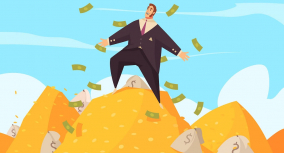F. Scott Fitzgerald wrote The Great Gatsby as a satire of society. Why did the novel appear in the given historical period? Why are there no positive characters in the book? What does it take to fulfill the American dream? The Great Gatsby Study Guide answers these and many other questions.
The Great Gatsby Key Facts
The Great Gatsby Articles
The Great Gatsby is the most famous novel of F. Scott Fitzgerald. It is also the most renowned book of the Jazz Age. This article contains the novel’s summary, a timeline, and a detailed description of the events by chapters.
This article contains all the information about The Great Gatsby characters: Nick Carraway, Jay Gatsby, Daisy and Tom Buchanan, and others. In the first section, you’ll find The Great Gatsby character map.
This article provides an explanation of The Great Gatsby’s themes. The core issues represented in the novel by Fitzgerald are: the American dream, money, social class, love, morality, & time.
This article explains the symbols in The Great Gatsby. In the first section, you’ll find the information on the color symbolism of The Great Gatsby. Then follows the information on the story’s setting symbolism.
The Great Gatsby: Essay Topics & Samples
Having trouble coming up with decent The Great Gatsby essay topics? No need to struggle anymore! Our selection of topics can outline your creative writing, providing prompts for consideration.
Historical Context of The Great Gatsby
The Roaring Twenties was the time of economic growth and prosperity. Another term, “Jazz Age,” became widespread thanks to Fitzgerald. In the 1920s, American culture and lifestyle were dramatically changing. Consumer goods became affordable and available. Automobiles became faster and cheaper. More and more households started to have electricity.
However, not everyone could enjoy these blessings of civilization. Cars, telephones, and large houses remained to be the privilege of the wealthy.
Fitzgerald wrote The Great Gatsby in the context of the rejected moral standards and disdain for the old ways. The novel analyzes how all the levels of society perceive the new life. The rural population was decreasing. Cities grew exponentially. Women obtained the right to vote, and their role in the total workforce became more visible. People had more time and disposable income. But as we see in Chapter 2, these improvements were distributed unequally among the population, causing jealousy and the willingness to be accepted by the “cream of society” at any cost.
But the author does more than merely describing the background of the Roaring Twenties. He explores the themes of ambitiousness, inequality, and instability of social strata.
The Jazz Age ended in the Great Depression. Fitzgerald thinks that the superficial frivolity of the era led to the economic disaster.
Still, the main character’s success showed that anyone could become wealthy, provided that they have enough persistence and motivation. The American dream is possible, but its fulfillment does not guarantee happiness. Under certain circumstances, anyone could become rich and famous. But is it what we live for?











